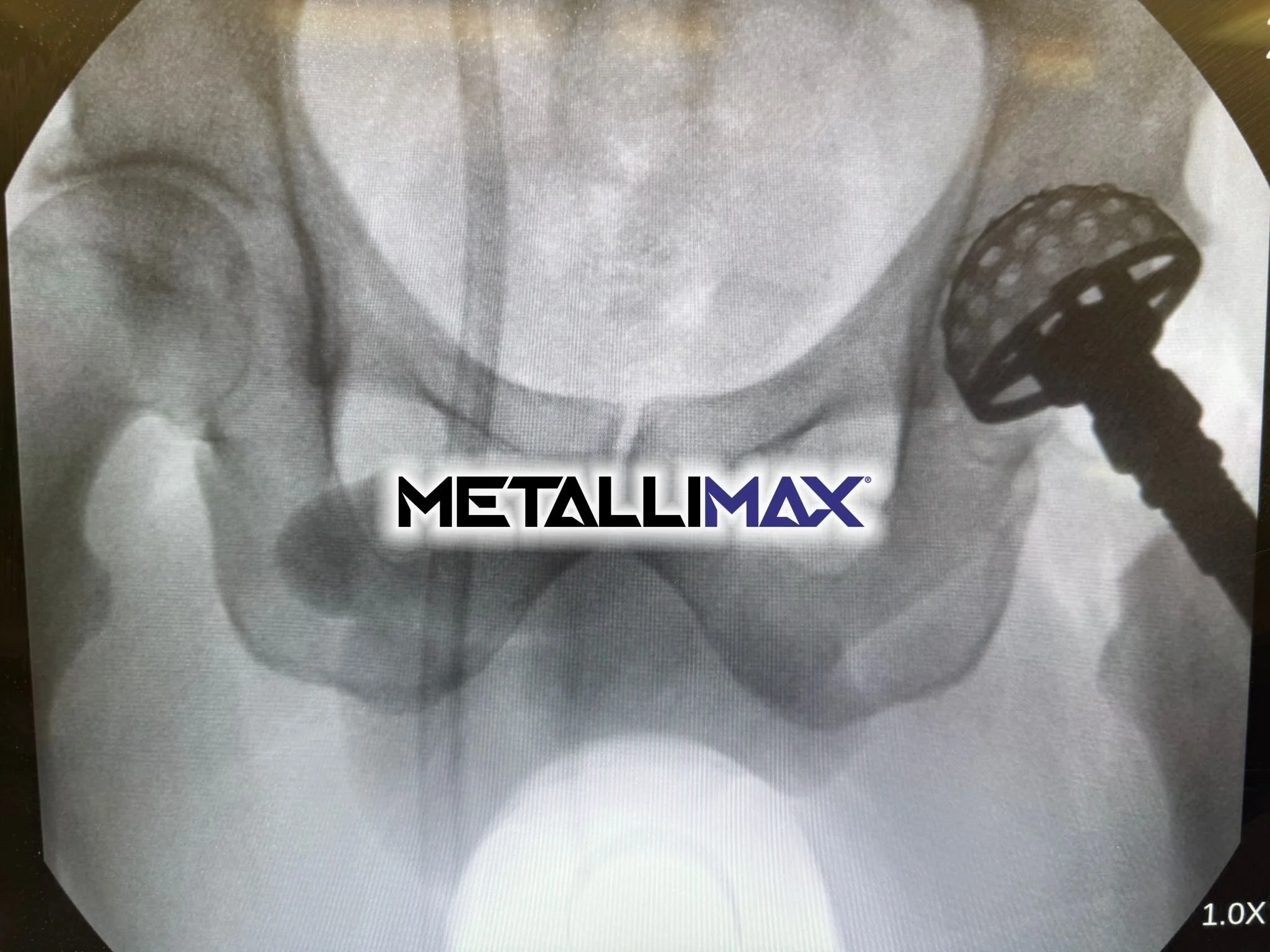The Metallimax OneReam(tm) Technique for acetabular preparation in total hip arthroplasty (THA) is a surgical approach designed to prepare the acetabulum for the implantation of the acetabular component with precision and efficiency. This method focuses on achieving optimal bone preservation, accurate component sizing, and secure implant fixation through a streamlined reaming process.
By using a single reamer size that matches the final acetabular component, the technique aims to minimize bone loss, enhance press-fit stability, and reduce operative time compared to traditional multi-ream techniques, which involve sequential reaming with progressively larger reamers. The single-ream approach has gained attention for its potential to simplify the procedure while maintaining or improving clinical outcomes, particularly in patients with suitable bone quality.
In the single-ream technique, the surgeon begins by assessing the acetabulum to determine the appropriate size of the acetabular component, typically guided by preoperative imaging and intraoperative templating. A single reamer, corresponding to the planned implant size, is then used to shape the acetabulum, removing cartilage and subchondral bone to create a hemispherical cavity that matches the implant’s geometry.
The goal is to achieve a precise fit that allows for a press-fit implantation, relying on the elasticity of the bone to secure the component without the need for excessive bone removal. This differs from traditional methods, where multiple reamers are used to gradually enlarge the acetabulum, potentially creating a non-hemispherical cavity and increasing the risk of over-reaming.
The single-ream technique requires careful attention to bone quality and acetabular anatomy to ensure adequate stability and avoid complications such as fracture or inadequate fixation. The potential advantages of the single-ream technique include reduced bone loss, shorter operative times, and long-term implant stability due to preservation of more subchondral bone.
By minimizing the number of reaming steps, the technique decreases the risk of thermal necrosis and preserves the structural integrity of the acetabulum, which is particularly beneficial for younger patients or those with good bone stock. Additionally, the streamlined process can enhance surgical efficiency, potentially reducing intraoperative complications and improving workflow in the operating room.
However, the technique demands precise preoperative planning and intraoperative judgment, as errors in reamer sizing or alignment can compromise implant stability or lead to insufficient bone contact. Surgeons must also consider patient-specific factors, such as bone density and acetabular morphology, to determine the suitability of this approach.
Clinical studies and surgeon experience suggest that the single-ream technique can achieve comparable or superior outcomes to traditional methods in appropriately selected patients. For instance, it has been associated with high rates of implant survivorship and low rates of revision when executed correctly.
However, challenges such as learning curve, variability in bone quality, and the need for specialized instrumentation may limit its widespread adoption. The technique is likely to be most compatible in cases with normal or near-normal acetabular anatomy and adequate bone stock, while patients with severe dysplasia or osteoporotic bone may require alternative approaches.
Overall, the single-ream technique represents a valuable advancement in THA, offering a balance of simplicity, bone preservation, and reliable fixation when applied with meticulous surgical technique and patient selection. Metallimax is proud to be on the cutting edge of the single-ream solution with our OneReam Acetabular Technique, enabled by the Metallimax Wear-Indicating Reamer System.


